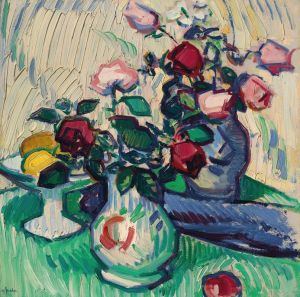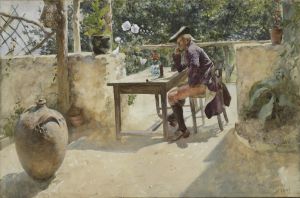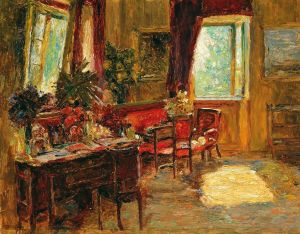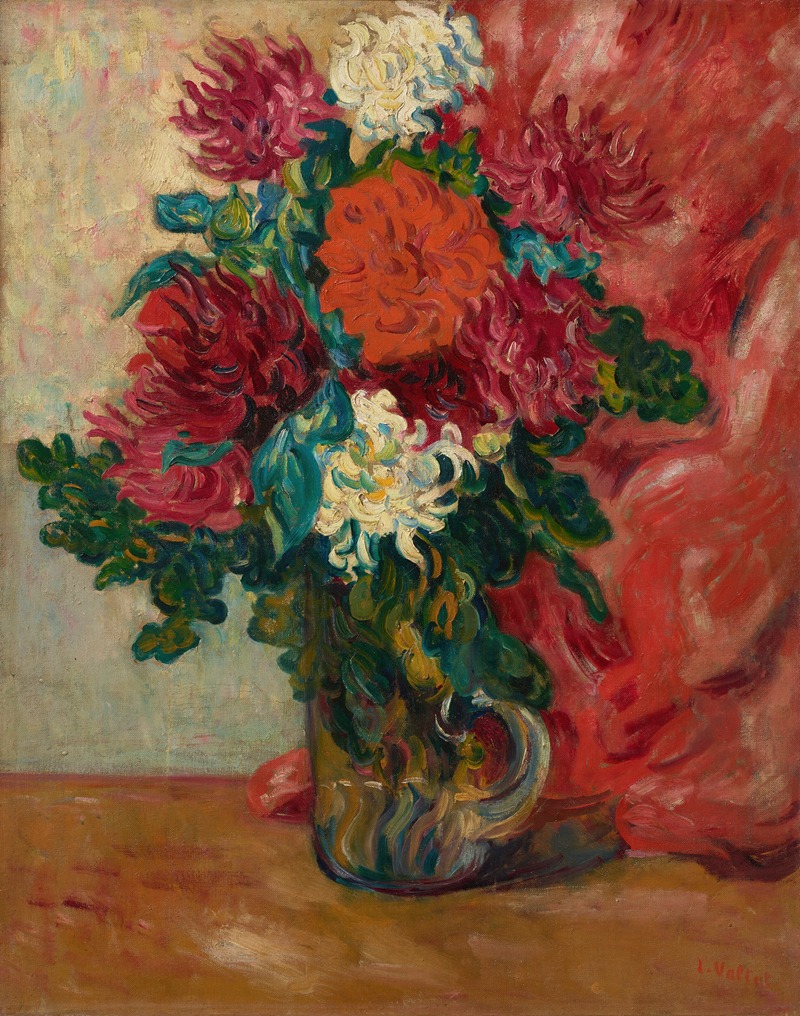
Dahlias à la cruche en verre devant une tenture rouge
A hand-painted replica of Louis Valtat’s masterpiece Dahlias à la cruche en verre devant une tenture rouge, meticulously crafted by professional artists to capture the true essence of the original. Each piece is created with museum-quality canvas and rare mineral pigments, carefully painted by experienced artists with delicate brushstrokes and rich, layered colors to perfectly recreate the texture of the original artwork. Unlike machine-printed reproductions, this hand-painted version brings the painting to life, infused with the artist’s emotions and skill in every stroke. Whether for personal collection or home decoration, it instantly elevates the artistic atmosphere of any space.
Louis Valtat was a French painter associated with the Fauvist movement, known for his vibrant use of color and bold brushwork. One of his notable works is "Dahlias à la cruche en verre devant une tenture rouge," which translates to "Dahlias in a Glass Jug in Front of a Red Curtain." This painting exemplifies Valtat's distinctive style and his contribution to early 20th-century art.
Valtat was born in Dieppe, France, in 1869 and studied at the École des Beaux-Arts and the Académie Julian in Paris. He was influenced by the Impressionists and Post-Impressionists, and his work often bridged the gap between these movements and Fauvism. The Fauves, or "wild beasts," were known for their radical use of color, and Valtat's work shares this characteristic, though he is sometimes considered a precursor to the movement rather than a central figure.
"Dahlias à la cruche en verre devant une tenture rouge" is a still life that captures Valtat's fascination with color and form. The painting features a bouquet of dahlias arranged in a glass jug, set against a richly colored red curtain. The composition is simple yet striking, with the vibrant hues of the flowers contrasting sharply with the deep red background. Valtat's use of color is expressive and emotive, a hallmark of his style that aligns with the Fauvist emphasis on color as a means of conveying emotion.
The painting demonstrates Valtat's skillful handling of light and shadow, as well as his ability to create depth and texture through color alone. The glass jug, with its reflections and transparency, is rendered with a keen eye for detail, yet the overall effect is one of spontaneity and fluidity. This balance between detail and abstraction is a key feature of Valtat's work.
Valtat's choice of subject matter—a simple still life—allows him to focus on the interplay of colors and forms. The dahlias, with their varied shades and intricate petals, provide a rich tapestry of color that Valtat explores with enthusiasm. The red curtain serves as both a backdrop and a frame, enhancing the vibrancy of the flowers and adding a sense of drama to the composition.
Throughout his career, Valtat remained somewhat on the periphery of the major art movements of his time, yet he maintained a unique and consistent style. His work was exhibited alongside that of other Fauvist painters, such as Henri Matisse and André Derain, and he participated in the Salon des Indépendants and the Salon d'Automne, important venues for avant-garde artists in Paris.
"Dahlias à la cruche en verre devant une tenture rouge" is a testament to Valtat's mastery of color and composition. It reflects his ability to transform a simple arrangement of flowers into a vibrant and dynamic work of art. While Valtat may not have achieved the same level of fame as some of his contemporaries, his contributions to the development of modern art are significant, and his paintings continue to be appreciated for their beauty and innovation.
Today, Valtat's works can be found in various museums and private collections, and they continue to be studied and admired for their bold use of color and their place in the history of modern art. "Dahlias à la cruche en verre devant une tenture rouge" remains a fine example of his artistic vision and his ability to capture the essence of his subjects through color and form.





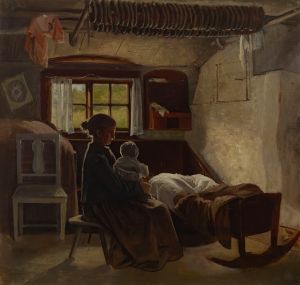
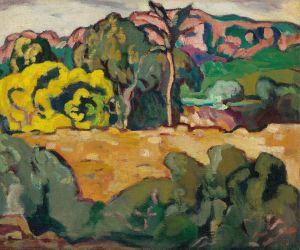
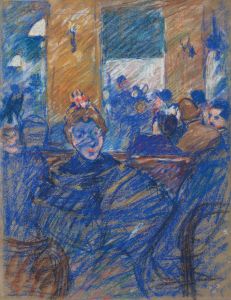

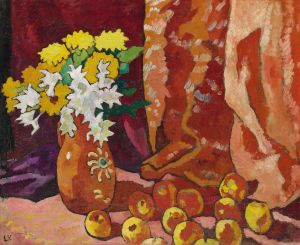
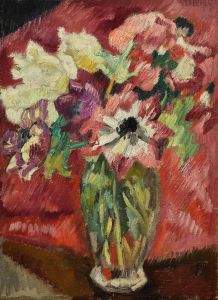
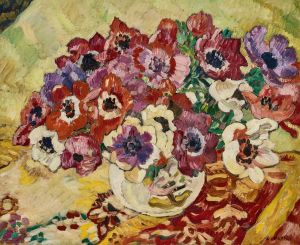
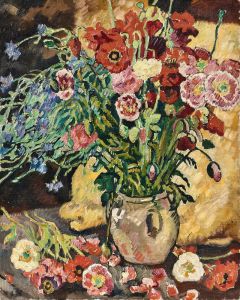
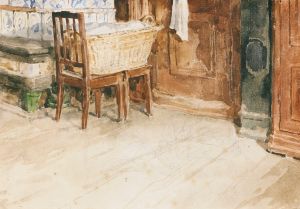
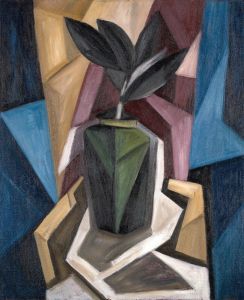
![Interior design drawings for unidentified rooms.] [Sketch for interior with green coloring and floral pattern on wall](/imgs/249360/s/winold-reiss-interior-design-drawings-for-unidentified-rooms-sketch-for-interior-with-green-coloring-and-floral-pattern-on-wall-dbc59d48.jpg)
